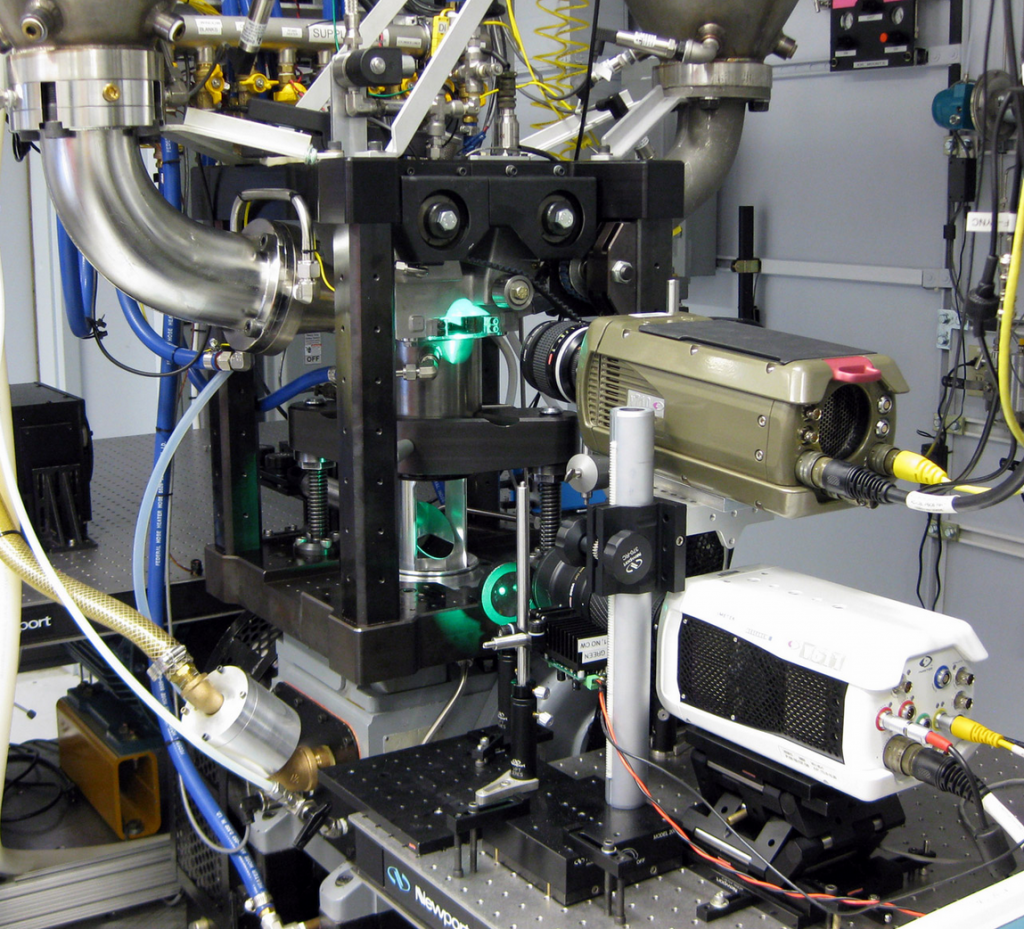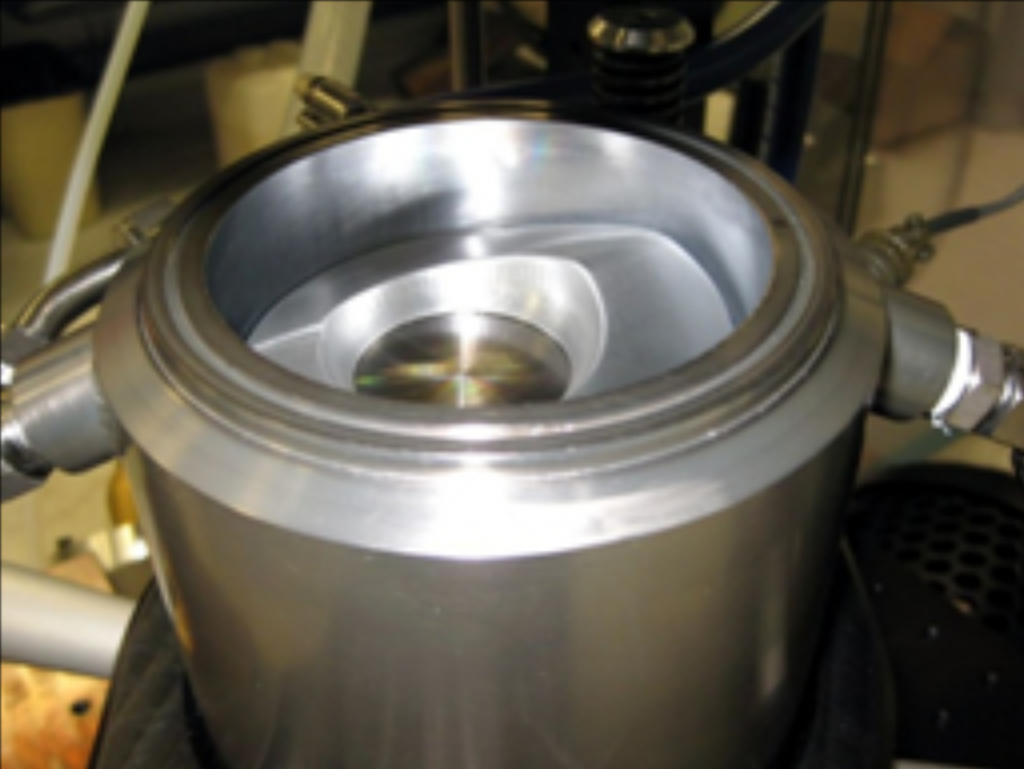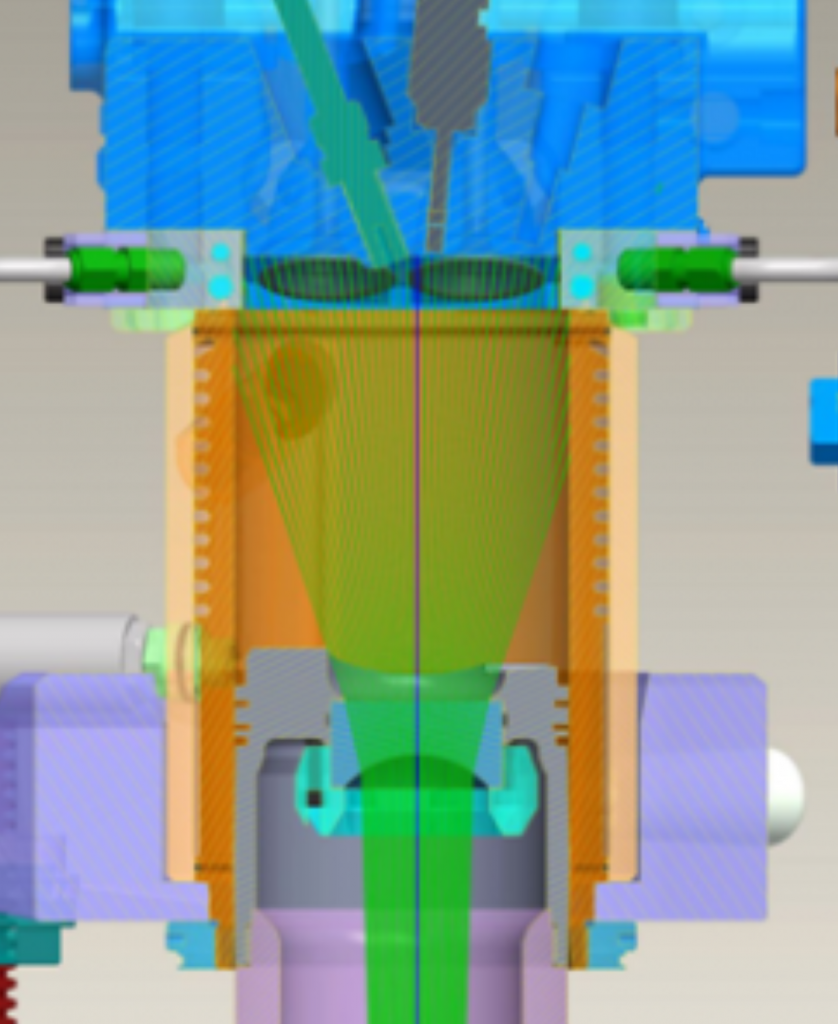To reduce CO2 emissions, we must supplement traditional gasoline with renewable fuels and improve the fuel efficiency of automotive engines. Research conducted in the Alternative Fuels Direct-Injection Spark-Ignition (DISI) Engine Lab strengthens the scientific underpinnings necessary for the automotive industry to meet increasingly stringent efficiency and emission standards. The single-cylinder research engine is based on the cylinder head and combustion system for an advanced spray-guided stratified-charge engine. It has a bore of 86 mm and a stroke of 95 mm, for a swept volume of 0.55 liter, which corresponds to a 2.2-liter swept volume in a typical 4-cylinder configuration. The engine can be operated in an all-metal configuration for extended performance mapping. It also offers extensive optical access to the combustion chamber for probing the in-cylinder processes.
Because this engine can operate overall fuel-lean, it can substantially improve thermal efficiency relative to the traditional port-injected stoichiometric gasoline engine. With lean operation, the intake flow requires less throttling to control engine load, reducing the fuel economy penalty associated with the use of throttling for load control. However, operating the engine in an overall lean but stratified mode requires precise and robust control of fuel/air mixing and charge preparation to ensure that an ignitable and flammable mixture exists around the spark-plug gap at the time of ignition. Such control is particularly challenging for flex-fuel engines because the fuel properties vary substantially between traditional gasoline and alternative fuel blends.
For example, when using E85, an 85%/15% volume mix of ethanol and gasoline, roughly 50% more fuel mass must be supplied to obtain the same engine torque due to E85’s high oxygen content (i.e., its low energy content). To fully understand the implications of the change of fuel type on the in-cylinder processes, researchers perform a combination of laser-based flow-field and fuel-concentration measurements.
Figure 3 Ray tracing of laser-sheet that enters through piston-bowl window. Source: https://www.jbei.org/.
Another approach for improving the vehicle fuel economy is based on the use of engine “downsizing.” By equipping the vehicle with a smaller-displacement engine, the engine must work with higher cylinder pressures, which reduces the need to throttle the intake air flow and the fuel efficiency losses associated with throttling. However, to ensure acceptable vehicle performance at high loads, the specific power output must be increased, typically by turbocharging.
To operate with high peak in-cylinder pressures, the fuel must have sufficient resistance to autoignition to avoid damaging engine knock. Fortunately, ethanol has very low autoignition reactivity (i.e., low knocking propensity) even under highly boosted conditions. E85 can therefore enable aggressive downsizing to improve the fuel economy. Given the industry trend of increasingly aggressive turbocharging, researchers are evaluating the autoignition reactivity of other proposed alternative fuels. These aspects are being investigated using knock-detection in the all-metal configuration of the DISI engine.


